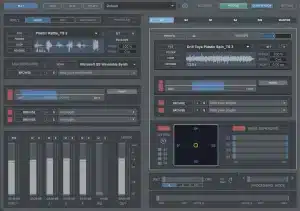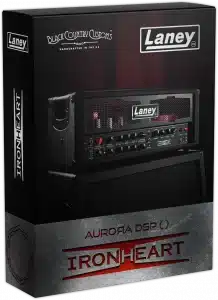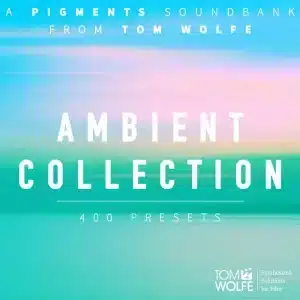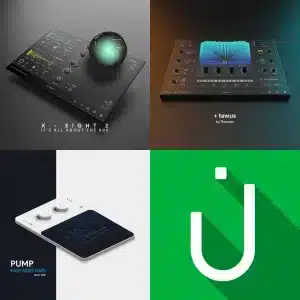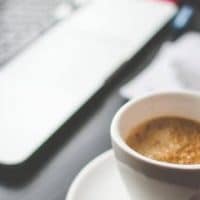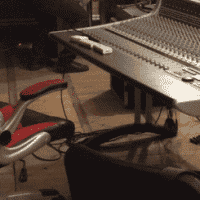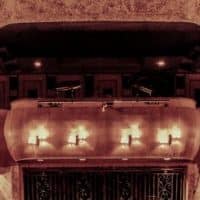Paris Sampling Developer Diary #2: The Paris Approach BACKGROUND When I decided to launch a new sampling company I knew that I wanted to do things differently than my previous attempts. My first company “Private Labs” was fairly successful, but ultimately suffered from lack of long term vision and ended…

Paris Sampling Developer Diary #3: Motion Cinematic Toolkit
BACKGROUND
In late 2017, I had the pleasure of working on an exciting feature film project directed by a very adventurous and talented director colleague of mine. I was given free rein to do as I wished with the film score (a rare and joyous experience for a media composer) so I set about drafting some themes for the main characters and the film as a whole. After a week or so I was pretty happy with my progress and felt I was in a good place with the project overall. All of the key dramatic moments were more or less covered by my themes, but there were still plenty of scenes that would need to be underscored non-thematically.
As I watched the film over and over again, I felt the thing that was really needed through those yet to be scored scenes was simply something to keep up the momentum. In my head I started to hear pulsing rhythms and melodic percussive patterns. I started humming and jotting down ideas of rhythmic patterns and riffs. Initially I thought to myself, I could probably cover this material with any one of my many sample libraries or synths, but being the avid samplist that I am, I thought that would be a bit lazy of me. After all, at the time I was managing a very well-equipped studio with a great room, mics and preamps. We had already booked in a string quartet and pianist for the main tunes so I just figured, well…why not just create some custom samples for the film!
PRELUDE
The ultimate goal was to create a toolkit of loops that my assistants and I could use to underscore some of the dialogue heavy scenes and serve as a jumping off point for a few appropriate action scenes. I booked a very talented bassist for a four hour session and had him bring two instruments; a contrabass and his electric bass. We spent our time together recording dozens of variations of grooves all in the key of E so that we could focus on capturing the largest variety of material. I also hired an electric violinist for another session and repeated the process with her. During the sessions I would beatbox, tap rhythms and play grooves that I had pre-programmed ahead of the session to jam over. I have to admit, it was probably the most fun I’d ever had in a sampling session.
My team and I then dutifully chopped, quantized and mangled the recordings applying sound design processes to them to make them unrecognizable from the original material. Many of these grooves ended up in the film, but I later released them as a collection of samples called “Motion Cinematic Grooves”, packaged in the open source “Photosynthesis Engine” for Kontakt. The original collection did well enough and was well received by composers. I always knew I wanted to create a follow up to the library but it wasn’t until months later that I came up with a plan.
AGGRESSIVE EXPANSION
Admittedly, I have never been much of a synthesist. I am probably much better than I let on, but my approach to sound design has always been to start with inspired performances captured as audio and twist them to kingdom come with plugins. Over the years I have had the good fortune of having many of my compositions recorded by orchestra and one day it occurred to me that I had, sitting on my hard drive dozens of gigabytes or hours worth of orchestral material that was ripe for mangling! It was then that I decided to expand upon my initial concept for “Motion” and take it to the next level by applying the same processes to orchestra. But, I wanted to do much more than another set of “synthesizers made from orchestra”. That concept has already been done and very well I might add by other companies. So, I decided to pick up where the original Motion left off and this time create the most comprehensive set of pulses and rhythmic compositional tools hand spun from orchestral recordings ever made.
SOUND DESIGN
In the spirit of collaboration, I recruited a producer to assist in the creation of my new vision. His job would be to create the pulses themselves from my raw recordings. I provided him with hundreds of recordings, ranging from string quartet to full symphony orchestra and instructed him to create as many pulses as he could before exhausting his imagination. We sent files back and forth for months before ending up with over 800 pulses which were then curated down to the 600 or so that would end up in the library. This was a very manual process consisting of many steps including extreme time stretching, compression and lots of manual editing and re-sampling before even getting around to the actual creation of “pulses”. I guided him through the process, gave feedback and worked on the rhythmic kits and pads.
UI
One of the inherent problems with so-called loop libraries is that they essentially relegate a composer to the role of music editor. While music editor is a respectful job in its own right, it is safe to say that most of us prefer to have as much creative control as possible when it comes to our music. In consideration of that, it was very important to me that the interface allow for extensive customization and playability so that the same library would ultimately sound completely different in the hands of each composer. Towards that end, I worked hard with my design team to create an interface that would do exactly that. While the waveform view, sample start and end controls and the ability to transpose on the fly mean that samples can be adapted to fit a variety of musical situations in meter, tempo and key. The macro fx knob, send and insert fx sequencers not to mention over 100 custom impulse responses allow for endless personalization of sounds.
SUMMARY
If it wasn’t already obvious I am extremely excited to present this library to the composing community and believe it will prove a very useful tool for busy media composers.

